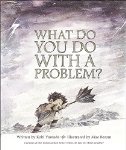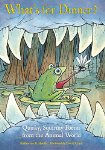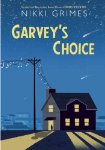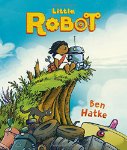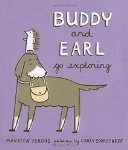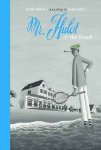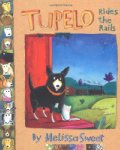 Return
ReturnAaron Becker
Wordless Picture Book
For ages 6 and up
Candlewick Press, 2016, 978-0-7636-7730-5
One day a little girl tries to get her father to spend some time with her, but he is so busy working at his drafting table that she finally gives up, goes downstairs, and uses her magic red crayon to draw a doorway on her bedroom wall. Her father finally realizes that she has gone and so he goes downstairs to investigate, which is when he sees the red door in her bedroom.
The father goes through the door and finds himself in a beautiful forest where lamps hang from the trees. His daughter’s red ball is sitting at the end of a wooden dock. The father picks up the ball, which is when a self-propelled boat sails up the river. The man gets on board and by the light of the moon he travels to a fantastic city. He can see his daughter, who is sitting in a little red rowboat, on the river ahead of him.
When the father finally catches up with his daughter she is with a boy, the king of the land, and a beautiful purple bird. The girl is clearly upset with her father for his neglect earlier and she has no interest in trying to make up with him. Just then the boat the father arrived in opens up and soldiers come out of it. They threaten the king, who responds by using a yellow crayon to draw a sword. The king tries to defend himself, but one of the soldiers uses a special device to suck up the sword, the yellow crayon, and the other crayons the king has. The king and the magical box are then whisked away by the enemy.
The boy quickly draws a large purple gryphon with his crayon and then he and the girl and her father climb on the animal’s back. They fly in pursuit of the kidnappers. They are close to the enemy when one of the soldiers opens the device to suck up the gryphon. The boy is captured by the enemy, but the purple bird, father and daughter fall through the air and land in the water far below. How are they going to save the king and the boy now?
This is the third book in a trilogy that tells the story of a pair of children who use magic crayons to travel to a world that is full of marvels and adventures. Once again the children are called upon to save the day, but this time the girl’s father also has to redeem himself in the eyes of his daughter, who is clearly sorely disappointed in her parent.
Readers of all ages are going to thoroughly enjoy this rich and exciting wordless picture book.

